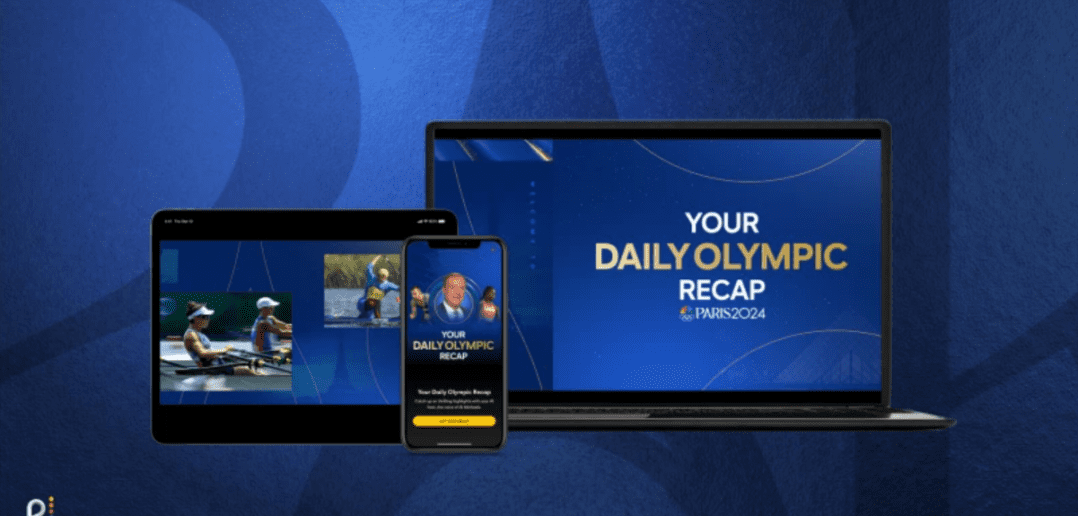England’s Euro 2024 semi-final win is the most-watched programme in the UK this year. In the US, 19 of the 25 most-watched programmes of all time are Super Bowls, according to Nielsen. Over the years, 12 Super Bowls have managed over 100M viewers. So big sport events attract big viewership. But while the spectacle can pull in a lot of casual fans, it’s the story that sustains deeper, more lasting fandom. The triumphs, defeats, comebacks, heroes and villains that live in fans’ memories are what creates legend and meaning in sport. This is where the true power of sports (TV) fandom lies.
New technologies and different types of media coverage are allowing today’s supporters to get closer to the action than ever before and opening the door to a more intimate and interactive world of sport. And according to Deloitte, 31% of Gen Z fans want access to behind-the-scenes content from athletes as part of the streaming sports-viewing experience. Also, expressions of fandom are becoming more personal and participatory, turning fans from passive supporters to active contributors.
Extended Reality Tech is Creating new Opportunities for Immersion and Engagement
The biggest asset within the sporting story is, and always has been, its heroes. But while these heroes were once untouchable figures on a TV screen, they’re now becoming direct competitors in the video games we play, personal trainers in our daily lives, and stars of deeply personal documentaries.
It used to be that the closest you could get to professional athletes was watching them from the stands. But that’s no longer the case as technology places us in the action right alongside them. In the F1® World game, for example, racing fans can attempt to beat lap times set by stars like Max Verstappen and Charles Leclerc. Cycling platform Zwift has taken this concept one step further with pro-am races that allow amateurs to race against professionals in real time.
And if competing against your heroes doesn’t feel close enough, why not just pretend to be them? Aston Villa put body cams and mics on players so that fans can experience the game from their point of view. Or the NBA app is letting users scan themselves to create their own avatar that overlays an actual player in real time.
But not only the sport itself offers intimate fan experiences, but also “off-the-pitch” fans can get closer to their heroes than before. For example, the Manchester City VR Experiences offers fans virtual meet-and-greets with players, behind-the-scenes tours, and interactive fan zones via the club’s app and VR platforms.
Media Coverage is Extending far Beyond the Field, Offering a more Intimate Glimpse into Athletes’ Lives
But perhaps even more interesting than how we follow our heroes during the game is the new ways we’re able to monitor them outside of it. We’re already seeing this with athletes like Cristiano Ronaldo launching their very own wellness apps that allow fans to mimic their personal workout plans, specialised diets and mental health strategies.
While data is allowing for deeper insights around how an athlete performs, more intimate forms of media are providing insight into who an athlete actually is. The recent Beckham documentary on Netflix is a prime example, showing the personality and vulnerability of a player who has long seemed too perfect to be relatable. Fans became even more enamoured as a result. This marks a significant shift from the days when stoicism was celebrated as a strength and media training taught athletes to be guarded in their replies.
So, no wonder there is currently a boom in sports documentary on TV. At the same time, more athletes are now producing their own content that takes fans behind the scenes. In the world of freeskiing, Cody Townsend and Nikolai Schirmer have built huge audiences by producing their own videos direct-to-consumer. And in the world of golf, Bryson DeChambeau is blurring the lines between YouTube influencer and U.S. Open champion. If more athletes follow suit, we could see a radical change to the media model where fans are able to bypass pricey subscriptions and follow their favourite pros directly. Emerging platforms like Heros.xyz are already pushing us toward this future by helping athletes monetise their content through paid subscription models.
AI is Allowing Fans to Choose and Customise their own Viewing Experience
Customisation will be further amplified by even more data and even more immersive tech. Imagine watching a completely bespoke broadcast that emphasises the stats of your favourite players, gives you live on-screen updates of your fantasy league standing, and is visualised in the imaginary environment of your choice. As far out as it may sound, this is already where things are headed. In February, the NBA premiered a voice-activated generative AI tool that can switch the game into alternate aesthetic modes on command. During the demonstration, the AI responded to a request to see a live Indiana Pacers game “as a Spiderman movie,” quickly converting the footage into a superhero aesthetic with animated players, comic-book graphics and dramatic music.
And during the Olympics 2024, Peacock is harnessing A.I. technology to present “Your Daily Olympic Recap on Peacock,” a first-of-its-kind, personalised experience complementing NBCUniversal’s comprehensive coverage of the Olympic Games Paris 2024. In collaboration with Emmy Award-winning, Hall of Fame announcer Al Michaels and powered by generative A.I. and A.I. voice synthesis technology, “Your Daily Olympic Recap on Peacock” provide fans with their own customised playlist featuring highlights of the events most relevant to them from the previous day. Each compilation features clips from NBCU’s Olympics coverage and is narrated by a high-quality A.I. re-creation of Michaels’ voice, which was trained using his past appearances on NBC and matches his signature expertise and elocution.
However, to ensure that this new level of individualisation doesn’t take away from the communal feel, enabling fan-to-fan interactions will be key in the future of sports. By blending cutting-edge technology with shared experiences, the TV industry can create a dynamic environment where fans feel connected both to the game and to each other.
Top Image : Peacock/NBCUniversal




